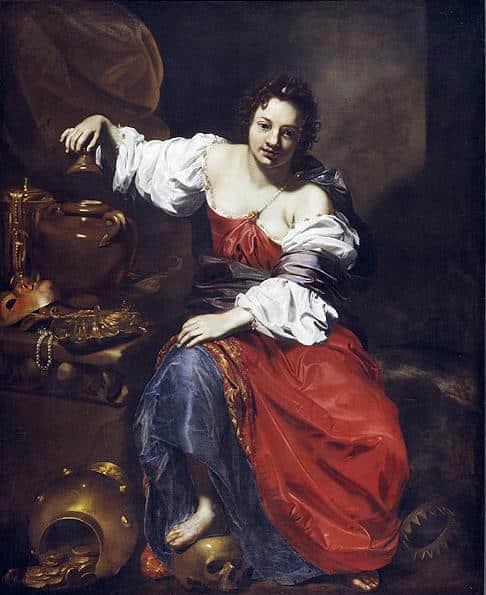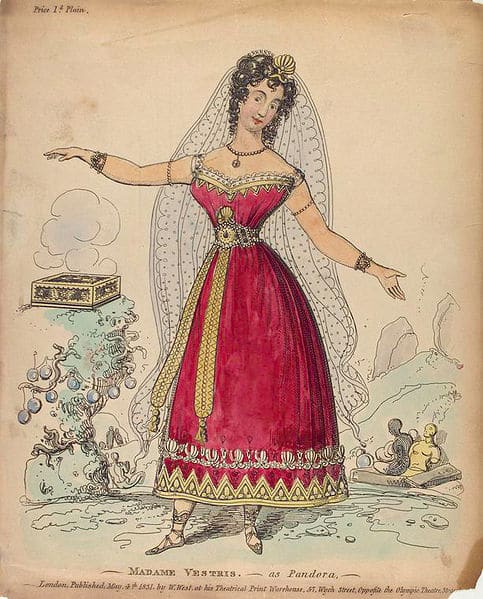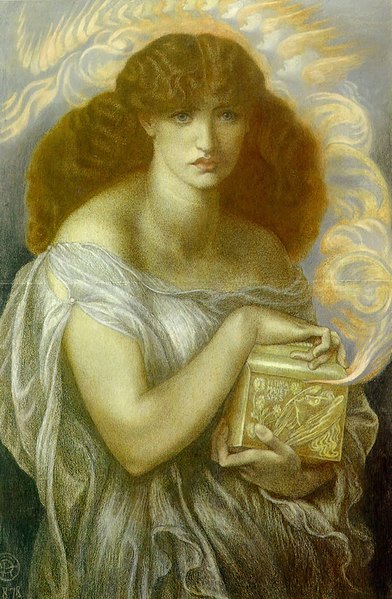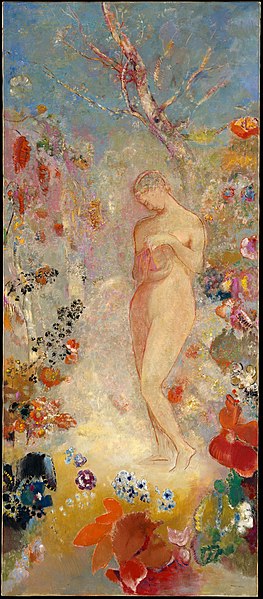The captivating story of Pandora, shrouded in mystery and curiosity, has evolved into a cautionary tale over the centuries. From her creation as the first mortal woman up to the moment she opened the fateful box, the tale of Pandora is a fascinating blend of beauty, curiosity, and consequences. Let us unravel the myth of the all-gifted woman and the profound lessons hidden within the box she dared to open.
Pandora Key Facts
| Parents | the Gods (creators, not parents) |
| Partners | Epimetheus |
| Siblings | None |
| Offspring | Pyrrha |
| Other names | None |
| Greek name | Πανδώρα |
| Roman name | Pandora |
| Best Known Myths | The creation of Pandora, the box of evils |
Name and Etymology

Pandora’s name is derived from the Greek words πᾶv (meaning all, everything) and δῶρα (meaning gifts). Thus, it can be interpreted in two different ways. On the one hand, it could mean “all-gifted,” referring to her creation by the gods and endowment with various gifts. On the other hand, it could mean “all-giving,” implying that she offers everything to mortals, good or bad.
Pandora is not known by any other names, and there is no Roman equivalent for her name. She is also recognized as the first woman on Earth, created by Hephaestus at the request of Zeus.
Pandora Family and Relationships
Pandora was created by the Gods, specifically Hephaestus, at Zeus’ request, and she received gifts from all of them. She does not, therefore, have any parents in the conventional sense. Her creation was a form of punishment for humans, who had previously been given the gift of fire by Prometheus.

Pandora was married off to Epimetheus, Prometheus’ younger and foolish brother, who was the reason why humans were not prepared to survive in the world, prompting Prometheus to steal fire from the Gods to help them. Pandora and Epimetheus had a daughter named Pyrrha (meaning “fire”). Pyrrha was the first child born to a mortal mother in the world. She and her husband, Deukalion, were the only survivors of the Great Deluge who later repopulated the earth.
Myths about Pandora
The Creation of Pandora: Before and After
The Before
Pandora could have been created for a variety of reasons, the most common of which is Prometheus and Epimetheus’ involvement in the creation of humanity. A brief background on this story: Zeus spared the two titan brothers, Prometheus and Epimetheus, because they did not participate in the Titanomachy. He also ordered them to populate the earth with animals, including humans.
Prometheus (meaning the one who thinks before acting) allowed his brother, Epimetheus (the one who thinks after acting), to bestow various characteristics on these animals. According to Plato’s Protagoras, Epimetheus created some animals as carnivores and others as herbivores, gave them furs, skins, or hard shells, and was in charge of their population. However, when it came to humans, he realized that he had given the other animals all of their attributes, leaving humans vulnerable to predators and the elements. Prometheus decided to intervene, stealing the fire from the Gods and granting humans the ability to build civilization.
Zeus was displeased with this and punished Prometheus with eternal torture. It appears that Pandora’s creation was a punishment for humans.
The After
According to Hesiod’s Theogony, Zeus ordered Hephaestus to create a creature that would be beguiling and seducing in many ways, whose descendants would torment humans for all eternity. Hephaestus modeled Pandora after immortal goddesses, so she was naturally beautiful.
The Gods then bestowed gifts upon her one by one. Athena, the Graces (Charites), and the Horai dressed her; Aphrodite made her elegant; Hermes taught her how to deceive and gave her the ability to speak; Peitho made her persuasive and seductive, and so on.
Pandora married Epimetheus shortly after she was created. The Titan, known for his lack of foresight, couldn’t predict what Pandora would do. For their wedding, Zeus gave Pandora a final gift – the box that would become the punishment for humans.
The Box of Evils
This box (or jar, according to Hesiod) contained a variety of plagues and evils that would befall humanity. To test Pandora, Zeus told her not to open it. However, her curiosity overcame her and she was unable to resist opening the box. When she opened the box, the swarm of evils contained within was released into the world. The fact that Pandora did not open the box out of malice is critical at this stage.
Pandora attempted to reattach the lid to the jar, hoping to keep the evils inside. She failed to complete it. However, the only thing left in the jar was Elpis, which represents hope. In light of all the evils that were let loose, this section is understood to be a justification for hope being the last thing to perish in humans.

Depiction And Characteristics
Pandora is frequently portrayed as a beautiful woman with a sense of mystery and curiosity. She has fair skin and dark hair, and her figure resembles that of a goddess. Pandora was smart and very beautiful, curious and cunning, deceiving and alluring, as the reason for her creation required.
She is associated with the infamous Box of Evils in Greek mythology, which represents the consequences of curiosity and temptation. Pandora is viewed as a cautionary tale about the dangers of succumbing to one’s desires without considering the consequences.
Representations Of Pandora in Art

Pandora’s story has been depicted in various works of art throughout history, highlighting her role as the bringer of sorrows and the personification of curiosity. Pandora has featured prominently in red-figure vases since the fifth century BC.
More recent notable works of art include: John D. Batten’s pre-raphaelite painting “The Creation of Pandora,” in which Hephaestus appears to brood before the as yet unanimated figure of Pandora; William Etty’s “Pandora Crowned by the Seasons,” depicting her apotheosis among the clouds; James Barry’s “Birth of Pandora,” depicting Pandora’s birth among the Olympians; and many more.
Mentions in Ancient Texts
Pandora is mentioned in Hesiod’s “Theogony” and “Works and Days” (8th century BC), as the first woman created by the gods who brought misfortune to mankind. To quote his evidently misogynistic verse, Pandora is regarded as a woman “from whom is the race of woman and female kind: of her is the deadly race and tribe of women who live among mortal men to their great trouble.” Pandora is also mentioned in Aeschylus’ and Sophocles’ tragedies, Nonnus’ “Dionysiaca”, and Ovid’s “Metamorphoses“.
Some writers, however, argue that Pandora was not an all-evil woman responsible for mankind’s destruction. According to Homer’s “Iliad” (24.527), Zeus kept two jars, one filled with blessings and the other with evils. Theognis (Fragment 1.1135) and Aesop (Fables 526) discuss how Pandora received the urn of blessing, becoming an all-giving presence to humans.
Frequently Asked Questions
Pandora was created by the gods, specifically Zeus and Hephaestus.
The box contained all the evils in the world, such as pain, suffering, and disease.
Pandora’s curiosity and disobedience led her to open the box, releasing the evils within.
Hope was the only positive thing left inside the box after all the evils escaped.
Pandora’s story teaches a cautionary tale about the consequences of giving in to temptation and curiosity, or even defying the gods.
Pandora is often portrayed as a god-like beautiful woman with an air of mystery, accompanied by the infamous box of evils.
Featured Image Credit: James Barry, CC0, via Wikimedia Commons
